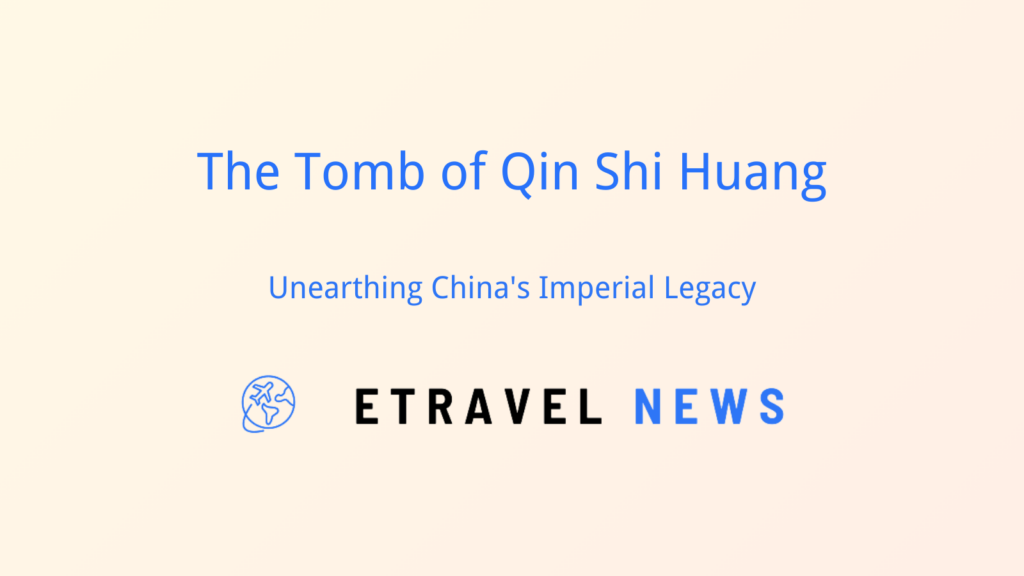Introduction to the Hexi Corridor
The Hexi Corridor, often referred to as the “Throat of China,” is a narrow stretch of land nestled between the Tibetan Plateau and the Gobi Desert. This 1,000-kilometer-long passage played a crucial role in the ancient Silk Road, serving as a vital artery for trade, cultural exchange, and military expeditions.
Geographically, the corridor extends from the Wushao Ling pass in Gansu Province to the Jade Gate at the border of Xinjiang. Its strategic location made it a key route for China’s expansion westward and a critical defense line against nomadic invasions from the north.
Throughout history, the Hexi Corridor has been a melting pot of cultures, religions, and civilizations, leaving an indelible mark on China’s rich tapestry of heritage.

Historical Background
The Hexi Corridor’s significance dates back to the Han Dynasty (202 BCE – 220 CE) when Emperor Wu sent his envoy Zhang Qian on diplomatic missions to Central Asia. This initiative opened up the Silk Road and established the corridor as a crucial link between East and West.
Over the centuries, various dynasties recognized the corridor’s importance:
- Han Dynasty: Established control and built the western sections of the Great Wall
- Tang Dynasty: Witnessed the flourishing of Buddhism and arts along the corridor
- Ming Dynasty: Strengthened defenses, including the construction of the Jiayuguan Fort
The corridor also saw the passage of numerous travelers, including the famous monk Xuanzang and the Venetian explorer Marco Polo.
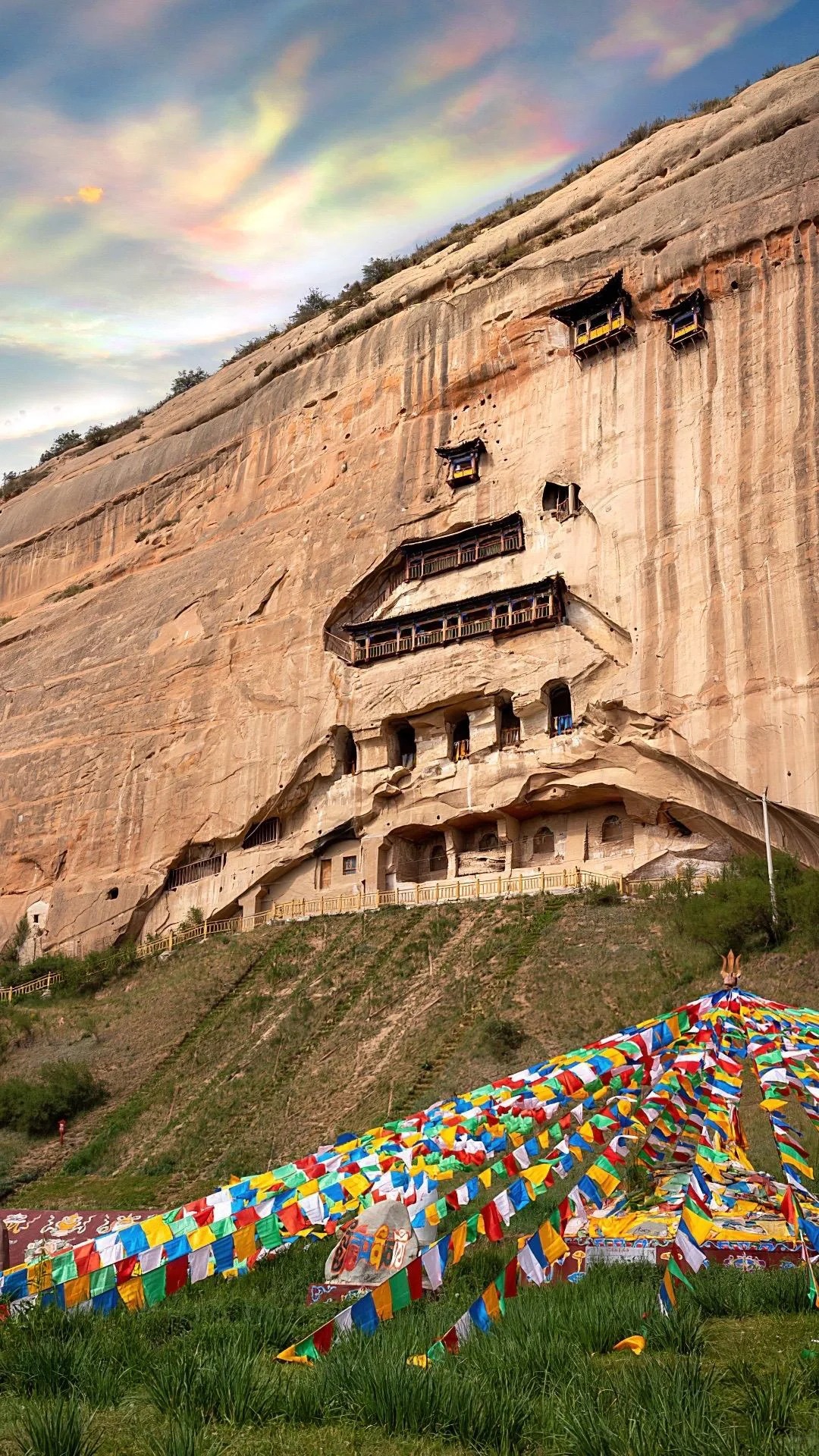
Major Cities and Landmarks
The Hexi Corridor boasts several historically significant cities and landmarks:
- Dunhuang: Home to the world-renowned Mogao Caves, a UNESCO World Heritage site featuring thousands of Buddhist sculptures and murals.
- Jiayuguan: Known for the western end of the Great Wall and the imposing Jiayuguan Fort.
- Zhangye: Famous for its colorful Danxia landforms and the Giant Buddha Temple.
- Wuwei: Houses the iconic “Galloping Horse Treading on a Flying Swallow” bronze statue.
Other notable sites include the Yulin Caves near Guazhou and the Suoyangcheng Ruins, offering glimpses into the corridor’s rich past.
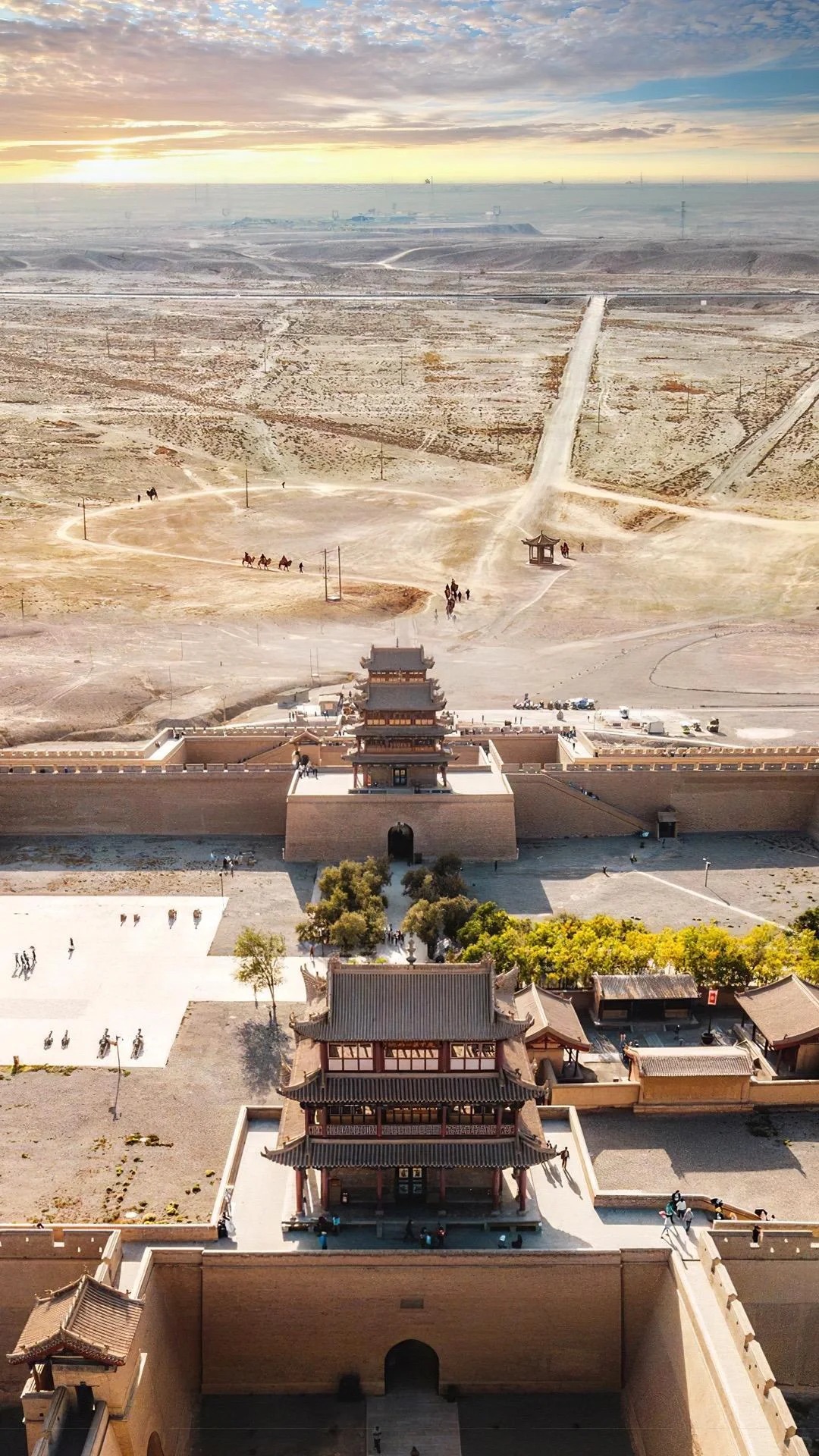
Natural Landscape and Environment
The Hexi Corridor presents a diverse and challenging landscape:
| Feature | Description |
|---|---|
| Gobi Desert | Harsh, arid terrain with scattered oasis towns |
| Qilian Mountains | Snow-capped peaks forming the southern border |
| Zhangye Danxia | Colorful rock formations often called “Rainbow Mountains” |
The climate is predominantly arid, with hot summers and cold winters. This harsh environment has shaped the development of unique agricultural practices and water management systems throughout history.
Cultural Melting Pot
The Hexi Corridor’s position as a crossroads of civilizations has resulted in a rich cultural tapestry:
- Religions: Buddhism, Islam, and traditional Chinese beliefs coexist.
- Art: Buddhist cave art in Dunhuang showcases a blend of Chinese, Indian, and Central Asian styles.
- Cuisine: Local specialties include hand-pulled lamian noodles and various lamb dishes.
Annual events like the Dunhuang Silk Road Festival celebrate this diverse heritage, attracting visitors from around the world.
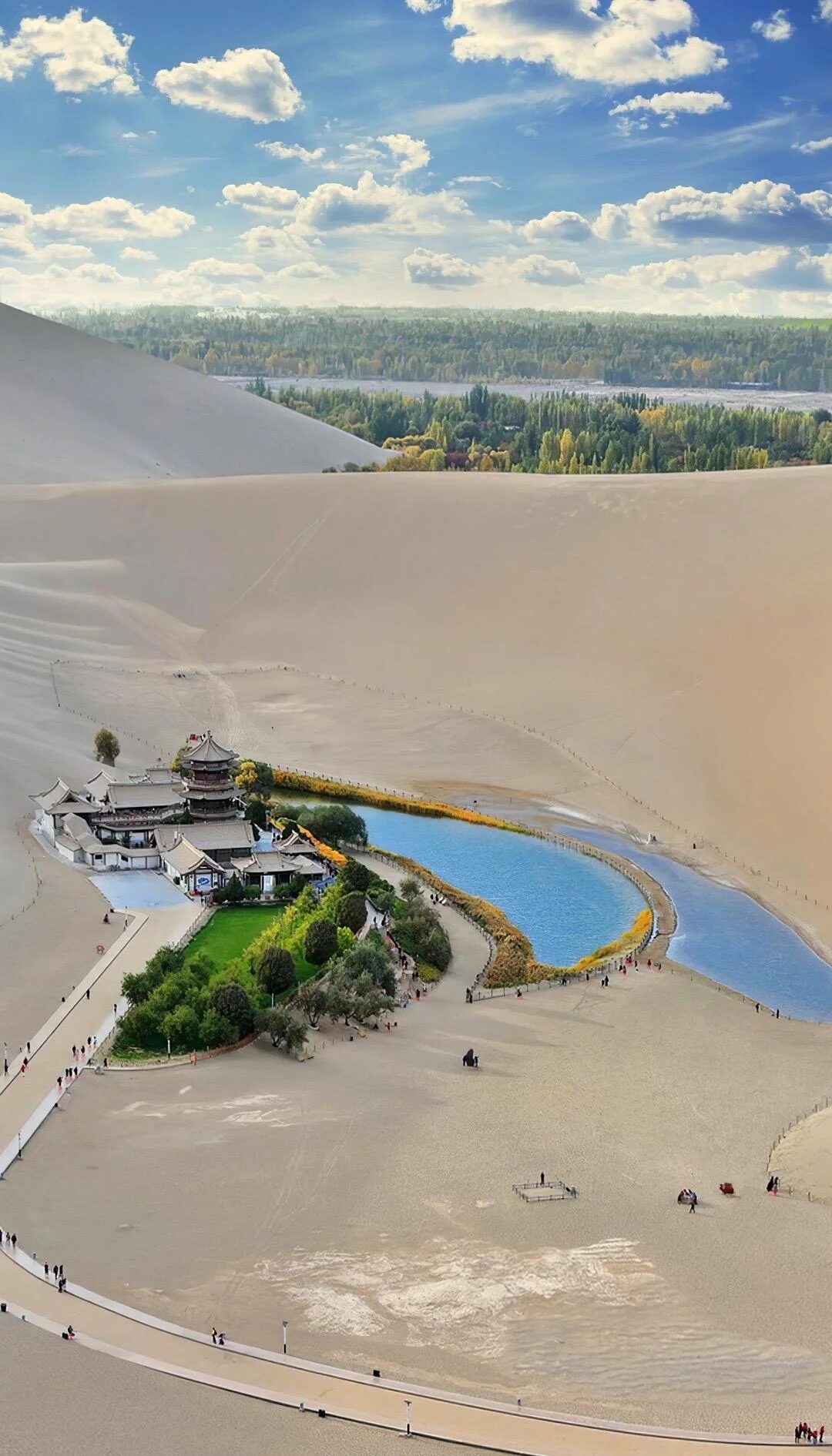
Modern Hexi Corridor
Today, the Hexi Corridor continues to be a vital region for China:
- Economic Development: The area is seeing growth in industries such as wind power and agriculture.
- Transportation: High-speed rail now connects major cities, making travel more accessible.
- Conservation: Efforts are underway to protect historical sites and combat desertification.
Challenges remain, including balancing economic development with environmental protection and preserving cultural heritage amidst modernization.
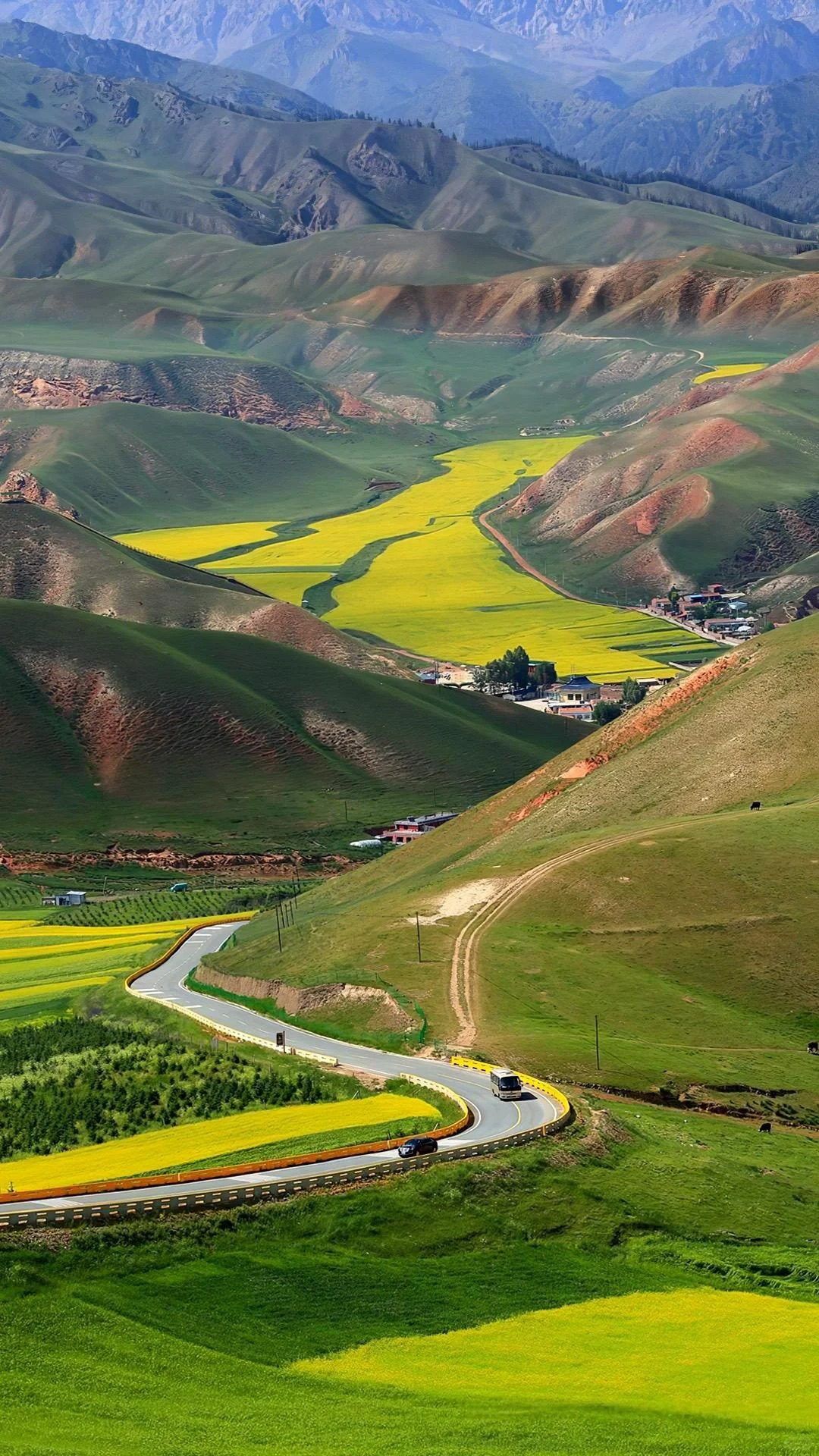
Travel Guide to the Hexi Corridor
For those looking to explore this fascinating region:
- Best Time to Visit: Spring (April-May) and Autumn (September-October) offer mild weather.
- Transportation:
- Fly into Dunhuang or Jiayuguan airports
- High-speed trains connect major cities
- Renting a car allows for flexible exploration
- Must-See Attractions:
- Mogao Caves in Dunhuang
- Rainbow Mountains in Zhangye
- Jiayuguan Fort
- Accommodation: Options range from international hotels in cities to guesthouses in smaller towns.
Travel Tips:
- Respect local customs, especially when visiting religious sites.
- Prepare for temperature fluctuations between day and night.
- Learn a few basic Chinese phrases to enhance your experience.
The Hexi Corridor offers a unique journey through time, where ancient history meets stunning natural beauty. Whether you’re a history buff, nature enthusiast, or cultural explorer, this remarkable region promises an unforgettable adventure in the heart of China’s northwestern frontier.



